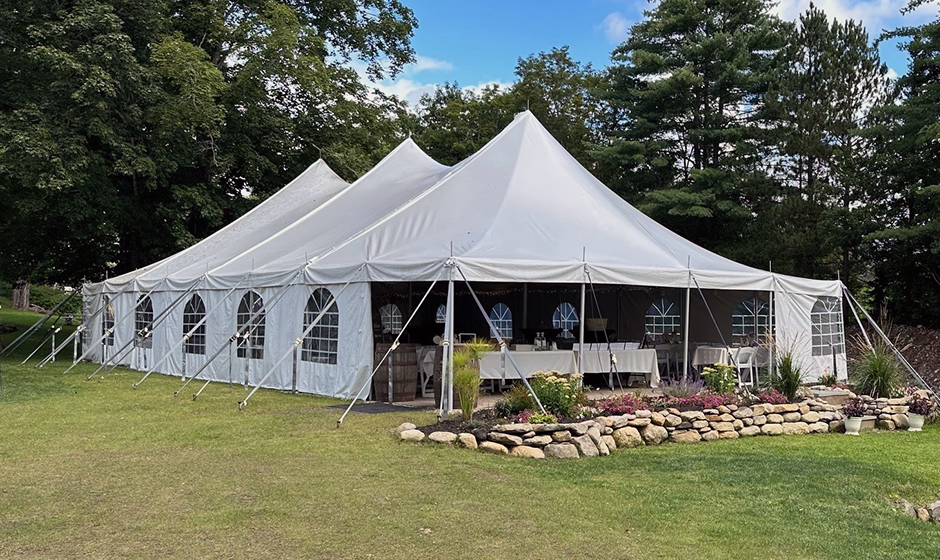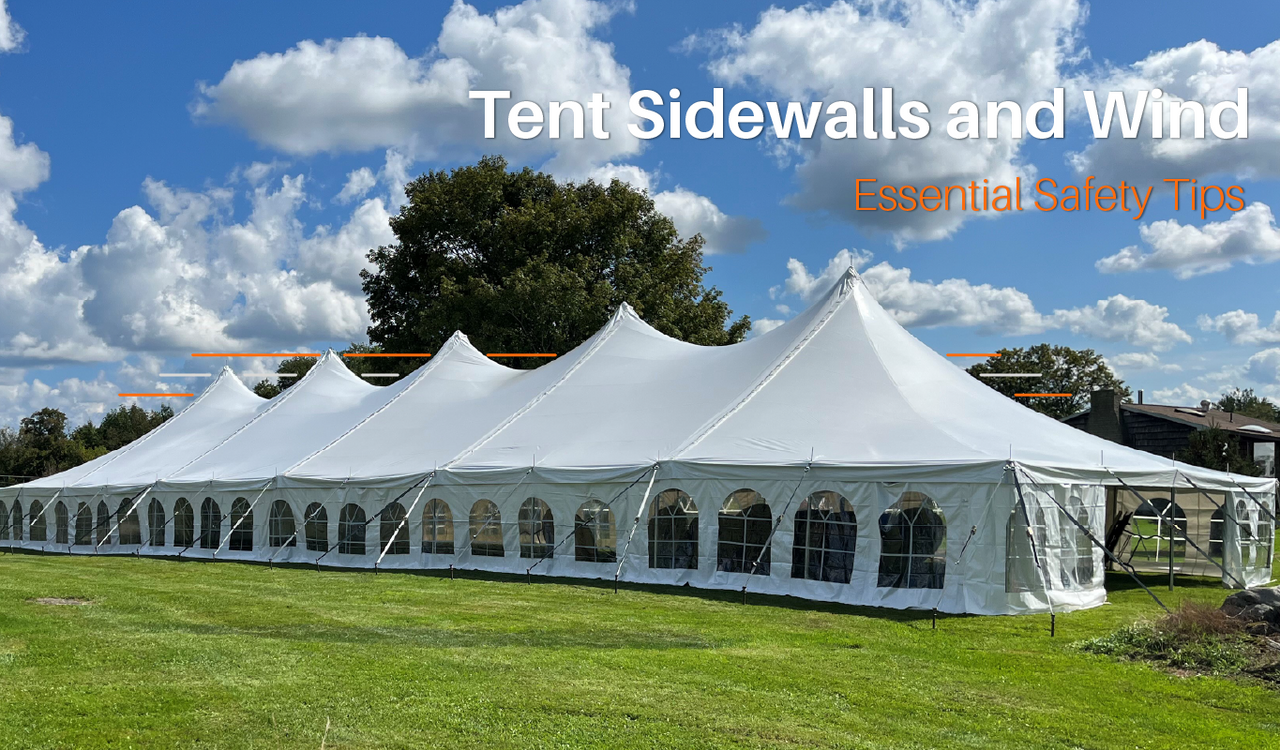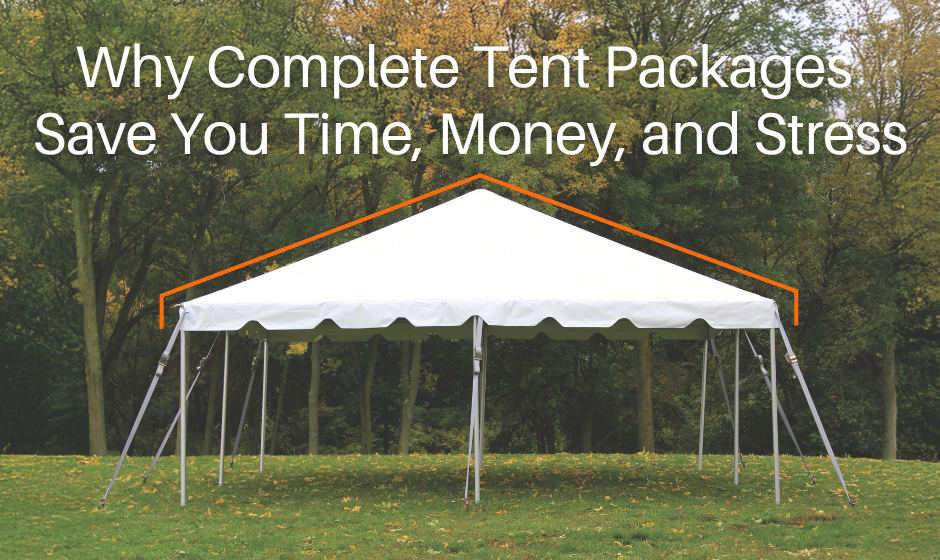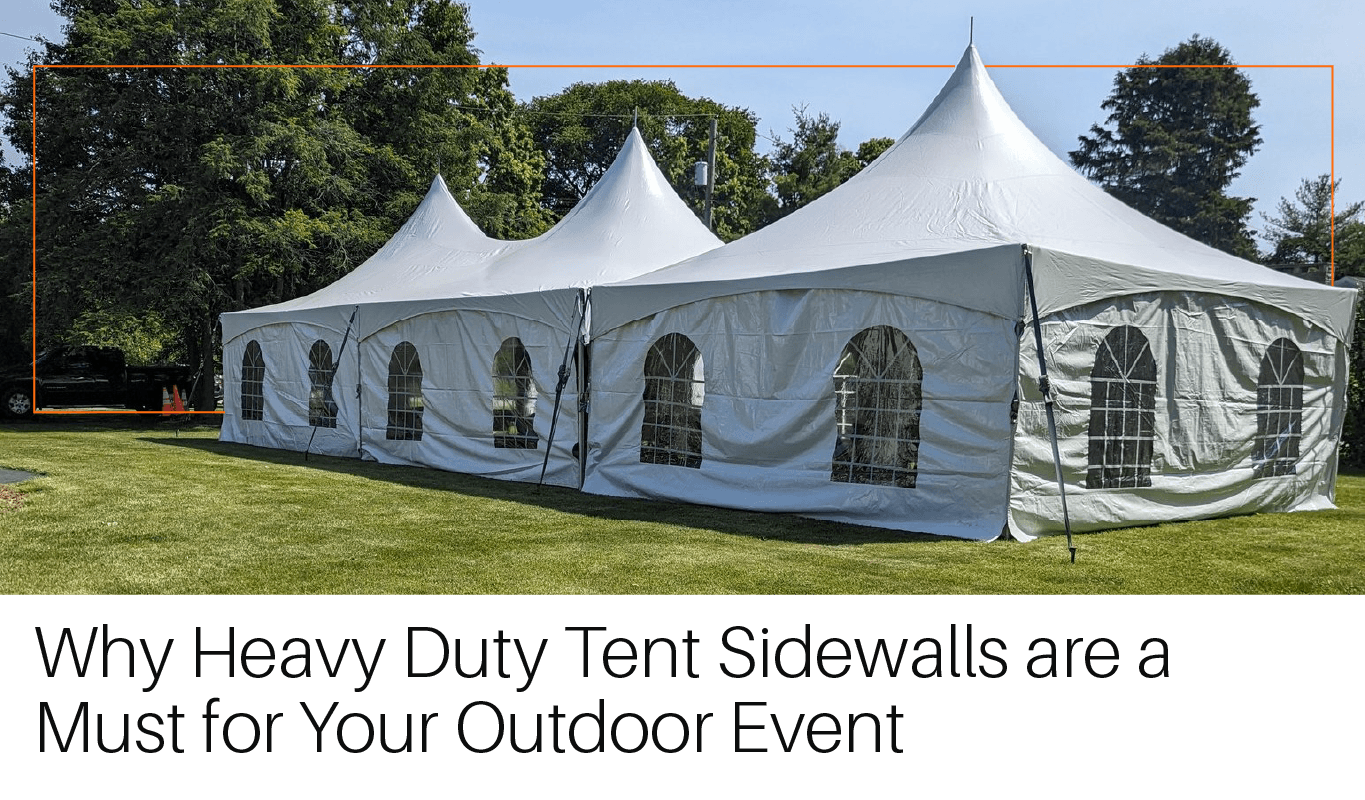Tent Sidewalls and Wind: What You Need to Know to Stay Safe
Sidewalls on a tent can offer so much—protection from rain, added privacy, improved climate control, and even a visual touch that completes the overall look of an event space. But when high winds enter the equation, those same sidewalls can turn into a serious safety concern. Knowing how and when to manage sidewalls in windy conditions can make the difference between a successful event and a dangerous situation.
In this article, we’ll break down why tent sidewalls can become risky during strong winds, when to take action, and how to ensure your tent is properly prepared for sudden weather changes.
Why Sidewalls Can Be Problematic in Wind
Sidewalls are designed to enclose a tent, but in doing so, they reduce airflow. During calm weather, that’s exactly what you want—better temperature control and shelter. However, in windy conditions, this enclosed design can actually create a wind trap.
The "Sail" Effect
Think of a tent with all sidewalls up as a giant box with sails on every side. When wind hits those surfaces, it builds pressure inside and along the walls. This creates uplift and sideways force that strains anchoring systems, ratchets, poles, and fabric. The more surface area the wind hits, the greater the stress. If the wind has nowhere to go, it forces its way through—or worse, it lifts and moves the structure.
Increased Risk of Collapse
Sidewalls in strong wind contribute significantly to the risk of structural failure. Tents aren’t permanent buildings—they rely on proper tensioning, staking, and a balance of airflow to remain stable. When one of those factors, like airflow, is restricted, failure becomes much more likely.

When to Remove Tent Sidewalls
Use Wind Forecasts as a Guide
If sustained winds are predicted at 20–25 mph or higher, or gusts are expected in that range, it’s time to consider removing sidewalls—especially on larger structures. Even moderate winds can pose a risk if they’re sudden or sustained over time.
Observe Real-Time Conditions
Wind can pick up without warning. Keep an eye on swaying poles, flapping fabric, or bulging sidewalls. These are all early signs that pressure is building. Don’t wait until the walls are bowing or the tent is shaking. Once signs appear, it’s best to act quickly.
Roll Up or Remove Panels
The goal is to reduce wind resistance. Rolling up or fully removing the sidewalls allows wind to flow through the tent instead of fighting against it. If full removal isn’t feasible (for design or temperature reasons), open multiple panels on opposite sides to create a cross-breeze.
What to Do During High Winds
Evacuate the Tent
First and foremost, safety comes before aesthetics or comfort. If conditions worsen, evacuating the tent is the safest option. Inform guests calmly and clearly. Having a weather plan in place before your event makes this process smoother and more professional.
Drop the Sidewalls
If possible, remove or drop all sidewalls once guests have exited. Doing so relieves pressure on the structure. Even partially opening walls can dramatically reduce uplift and strain.
Reinspect All Anchoring
Use this opportunity to check stakes, ratchets, and tie-downs. Wind increases stress at every point of tension. Re-tighten ratchets, replace loosened stakes, and add ballast or weight to key corners as needed.
CELINA Team Insight: During wind events, removing sidewalls early can reduce pressure by up to 60%. Proactive response is the best protection against tent damage.
Tent Safety Is a Team Effort
Tent safety during wind events isn’t just the responsibility of the tent rental provider—it also requires active awareness from event planners, venue staff, and even clients. By sharing weather updates, monitoring the tent, and responding quickly to warnings, everyone plays a role in reducing risk.
Professional tent installers often recommend these proactive measures:
- Always monitor weather forecasts for outdoor events.
- Have a dedicated person assigned to weather monitoring during the event.
- Establish a wind protocol with clear action steps (remove walls, evacuate, etc.).
- Choose tent types rated for higher wind loads if your location is known for unpredictable weather.
Finally
Sidewalls are a beautiful and functional part of any event tent, but they need to be treated with caution when wind becomes a factor. By removing or rolling up sidewalls in time, inspecting your tent’s anchoring system, and acting proactively when conditions shift, you can significantly reduce the risk of tent failure and ensure a safe, successful event for everyone.
Weather can be unpredictable, but your tent safety plan shouldn’t be. Stay ready, stay safe, and don’t let a breeze turn into a blowout.
FAQ
Why are tent sidewalls risky in high winds?
Sidewalls block airflow, causing wind pressure to build inside and against the tent’s surface. This “sail effect” can strain or damage poles, fabric, and anchors. Removing or opening sidewalls helps wind pass through, reducing the risk of uplift and collapse during gusty conditions.
At what wind speed should I remove tent sidewalls?
If sustained winds reach 20–25 mph or gusts are expected in that range, it’s best to remove or roll up the sidewalls. Wind thresholds vary by tent type and size, so always consult your manufacturer’s guidelines. Celina recommends erring on the side of caution and acting early.
Can I keep some sidewalls up during wind?
Yes, but only if you maintain airflow. Open multiple panels on opposite sides to create a cross-breeze. This helps reduce internal pressure while offering partial protection from the elements. Avoid fully enclosing the tent when winds increase.
What should I do if wind picks up unexpectedly?
Evacuate the tent immediately for safety, then drop or remove the sidewalls. Reinspect all anchors, stakes, and ratchets to ensure nothing has loosened. Tighten or reinforce connections as needed before allowing guests to re-enter.
How can I prepare my tent for windy weather?
Always check forecasts, choose a tent rated for wind loads, and anchor it properly using stakes or ballast. Establish a weather action plan that includes clear steps for sidewall removal and evacuation. Celina’s professional-grade tents come with detailed wind and load ratings for guidance.
Can sidewalls cause a tent to collapse?
Yes, in certain conditions. Fully enclosed tents can trap wind, increasing internal pressure and structural strain. This can lead to pole bending, anchor failure, or even partial collapse. Managing airflow by opening sidewalls prevents these pressure buildups.
What are signs that wind is becoming unsafe for a tent?
Watch for swaying poles, bulging sidewalls, and fabric flapping loudly—these are early warnings of wind stress. If the tent begins to shake or creak, evacuate immediately and inspect all anchors before continuing the event.





















